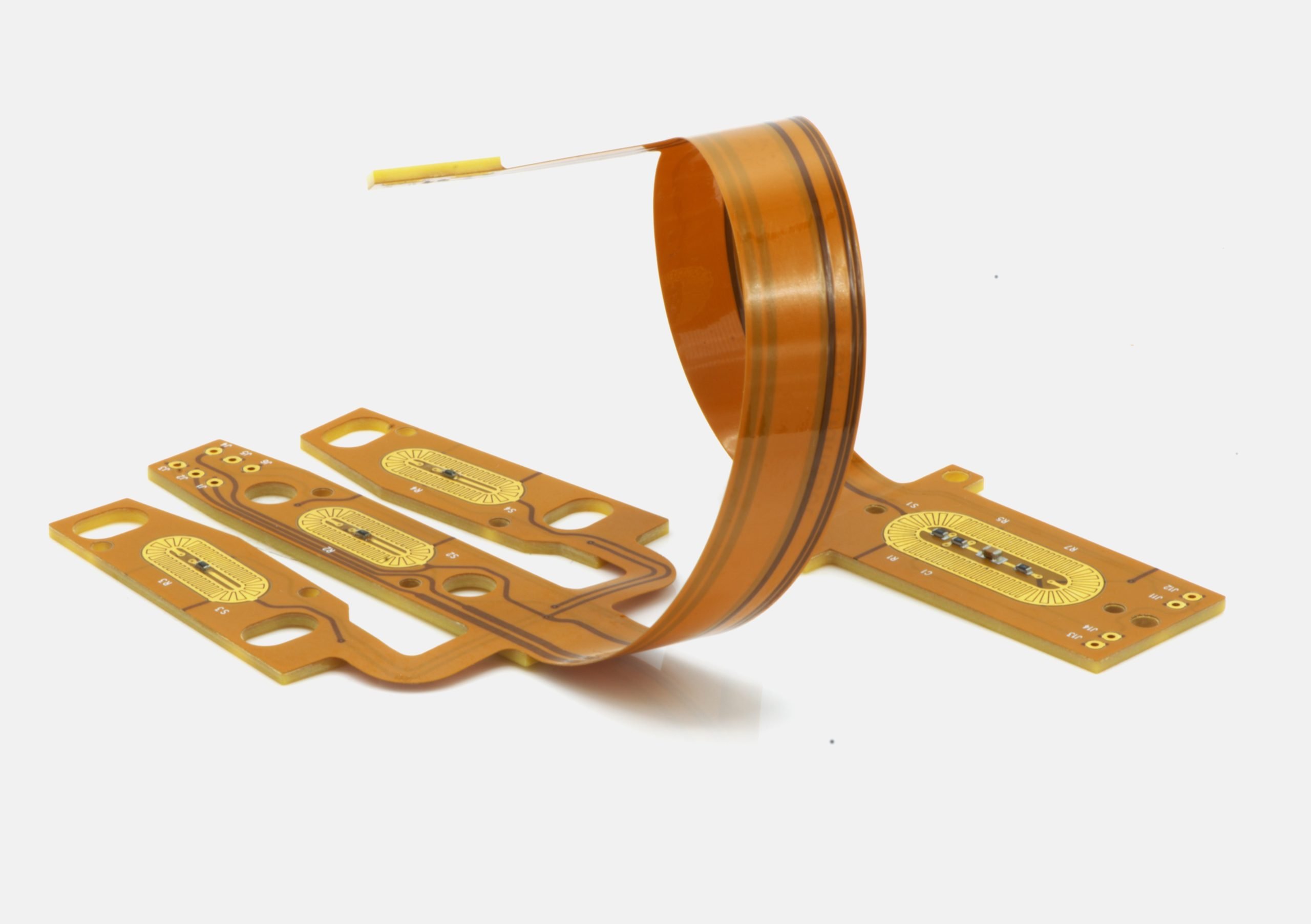
Polymer Thick Film (Printed Electronics): Thin, Flexible, and Designed for the Human Body
Polymer Thick Film (PTF) technology, commonly referred to as printed electronics, is becoming the foundation for a new generation of wearable medical devices. Instead of relying on rigid copper circuitry, PTF systems use conductive inks printed directly onto flexible dielectric substrates, enabling circuits that are extremely thin, lightweight, and optimized for skin-contact applications.
A wide range of conductive inks can be used, each tailored for specific electrical or mechanical performance. These include silver, copper, carbon, nano-silver, and silver/silver-chloride (Ag/AgCl) formulations. Silver and nano-silver provide high conductivity for signal paths, carbon inks are ideal for stretchable or abrasion-prone areas, copper offers cost-effective conductivity, and Ag/AgCl is the industry standard for biopotential electrodes used in ECG, EMG, and fluid-contact sensors.
These inks are printed onto soft dielectric materials such as Polyester (PET) or Thermoplastic Polyurethane (TPU). PET offers excellent dimensional stability for precise circuitry, while TPU provides superior flexibility, softness, and skin conformity, ideal for patches worn during intense activity or extended periods. Because PTF is compatible with roll-to-roll production, manufacturers can create complex circuits at high volume and low cost, making the technology perfectly suited for single-use or disposable medical sensors.
This combination of specialized inks and flexible substrates creates electronic layers that move naturally with the body, maintaining reliable input and signal integrity even under sweat, vibration, and repeated bending.
Bring your wearable biosensor concept to production.
Connect with PICA’s engineering team to explore scalable flex and PTF solutions.
Biosensor Patches: Real-Time Biofluid and Biometric Monitoring
Biosensor patches have become one of the most dynamic areas of wearable health technology, offering continuous, non-invasive measurement of parameters such as hydration, electrolytes, lactate, glucose trends, pH, temperature, and more. These adhesive patches collect sweat or other biofluids and convert them into real-time digital data that can be monitored through a phone or wearable device.
A typical biosensing patch integrates:
1. A skin-friendly adhesive layer for comfort and stability during activity.
2. A microfluidic or absorbent structure that channels sweat or biofluids precisely toward sensor electrodes.
3. A flexible PTF-based electronic layer that performs the sensing and communication functions.
Because these patches must remain accurate during motion and perspiration, the ultra-thin, conformal nature of PTF circuitry is essential. The flexibility of PET and TPU substrates allows the sensor to maintain consistent skin contact, while conductive inks, especially Ag/AgCl and carbon, ensure stable electrode performance in dynamic conditions.
Biosensor patches represent the future of personalized health monitoring: lightweight, disposable, and capable of capturing biochemical signals during real-world activity. By combining Polymer Thick Film electronics with innovative biofluid sensing science, wearable patches continue to push the boundaries of what non-invasive, real-time health monitoring can achieve.
PICA Manufacturing Solutions supports the rapid growth of wearable health technology with expertise in flex circuits, Polymer Thick Film electronics, roll-to-roll manufacturing, and advanced materials. Our global engineering and production teams understand the unique demands of ultra-thin, body-worn devices and provide the precision, reliability, and scalability needed for successful commercialization. By combining technical depth with flexible manufacturing, PICA helps bring the next generation of biosensor patches from concept to high-volume reality.
